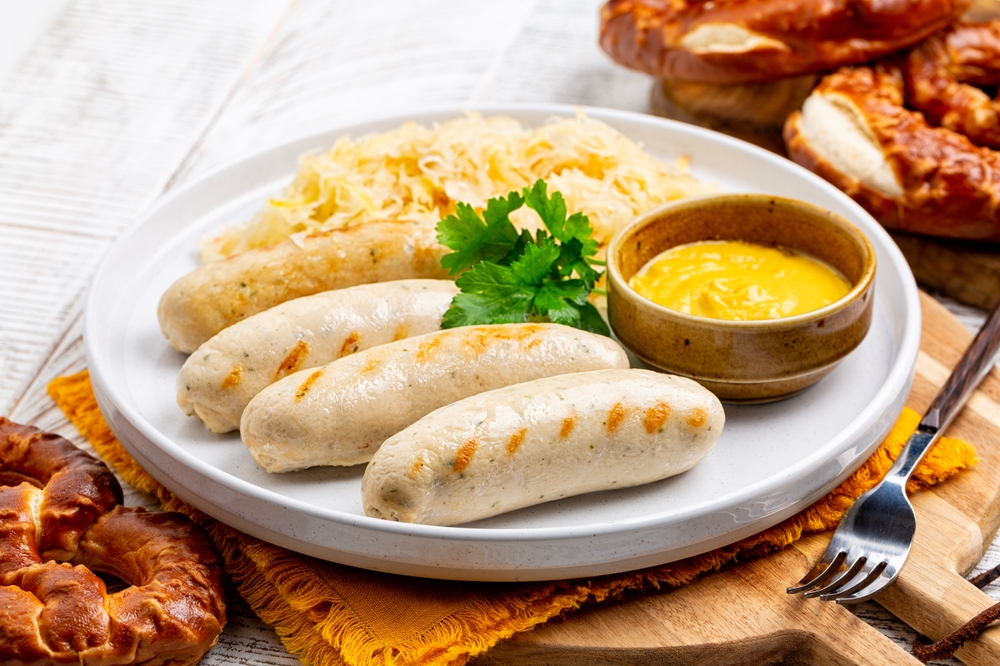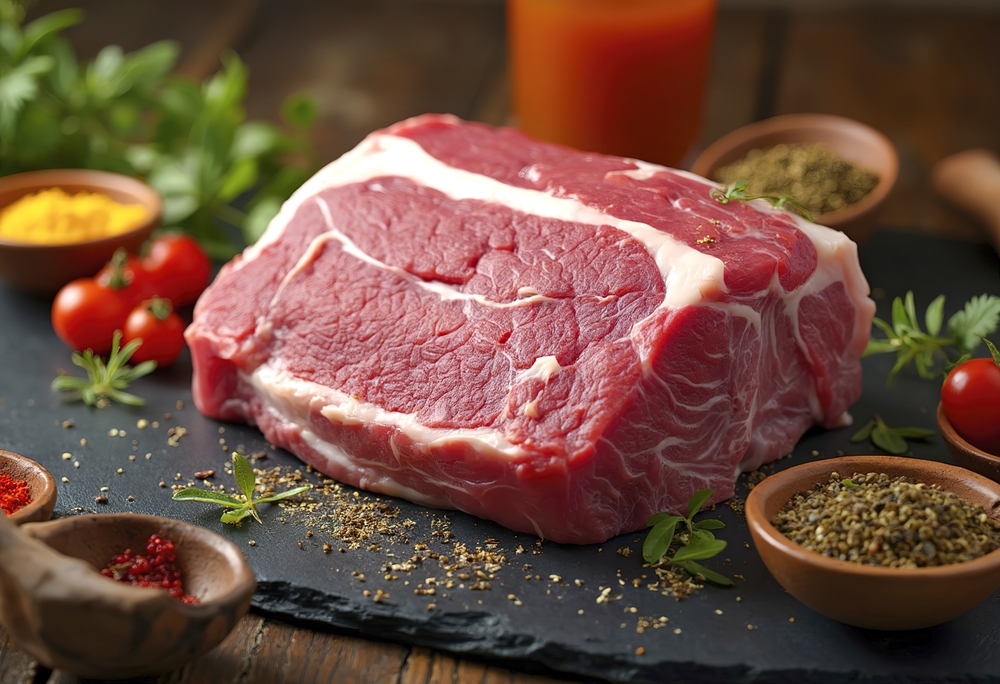Weißwurst (White Sausage)
Weißwurst, or white sausage, is finely textured and gets its light color from the meat used. Found throughout Germany, weißwurst was, historically, a late-morning snack due to its perishable nature. It is still most commonly enjoyed before noon. The freshness of lemon zest and parsley are considered the essence of this sausage. Weißwurst was an accidental discovery in 1857 made by Munich butcher Sepp Moser. He used a thinner casing when he ran out of thick casing and decided to poach the sausage to keep it from bursting while cooked. Today, the casing is removed before eating, with many Germans slitting open the end and sucking out the sausage with each bite. Weißwurst is commonly served with pretzels and sweet mustard.
Recipe Servings: 16–20
+ 2 hours 45 minutes resting
Ingredients
- 2 lbs (907 g) veal shoulder, cubed
- 2 lbs (907 g) pork shoulder, cubed
- 13 oz (400 g) pork fat, cubed
- ¾ cup (255 g) powdered milk
- 1 tsp (4 g) onion powder
- 2 tsp (8 g) finely ground white pepper
- ½ tsp (2 g) mace
- ½ tsp (2 g) ground ginger
- 4 tsp (12 g) lemon zest
- 1/3 cup (43 g) parsley
- Hog casings, as needed for stuffing
Directions
- Chill veal and pork in freezer for 45–60 minutes. This will help the meat to grind better.
- Combine veal, pork, pork fat, powdered milk, onion powder, white pepper, mace, ginger, lemon zest, and parsley in a large bowl.
- Grind the mixture together and stuff it into casings.
- Refrigerate sausages for 2–3 hours before cooking.
- Roast sausages in oven 15–20 minutes at 450°F (230°C), pan-fry over medium heat 20–25 minutes, or poach in a shallow pan with simmering water for 20–25 minutes.
Notes
- Use fresh sausages within three days or weißwurst will keep in freezer, individually wrapped, for two to three months.
Copyright © 1993—2025 World Trade Press. All rights reserved.

 Germany
Germany 
